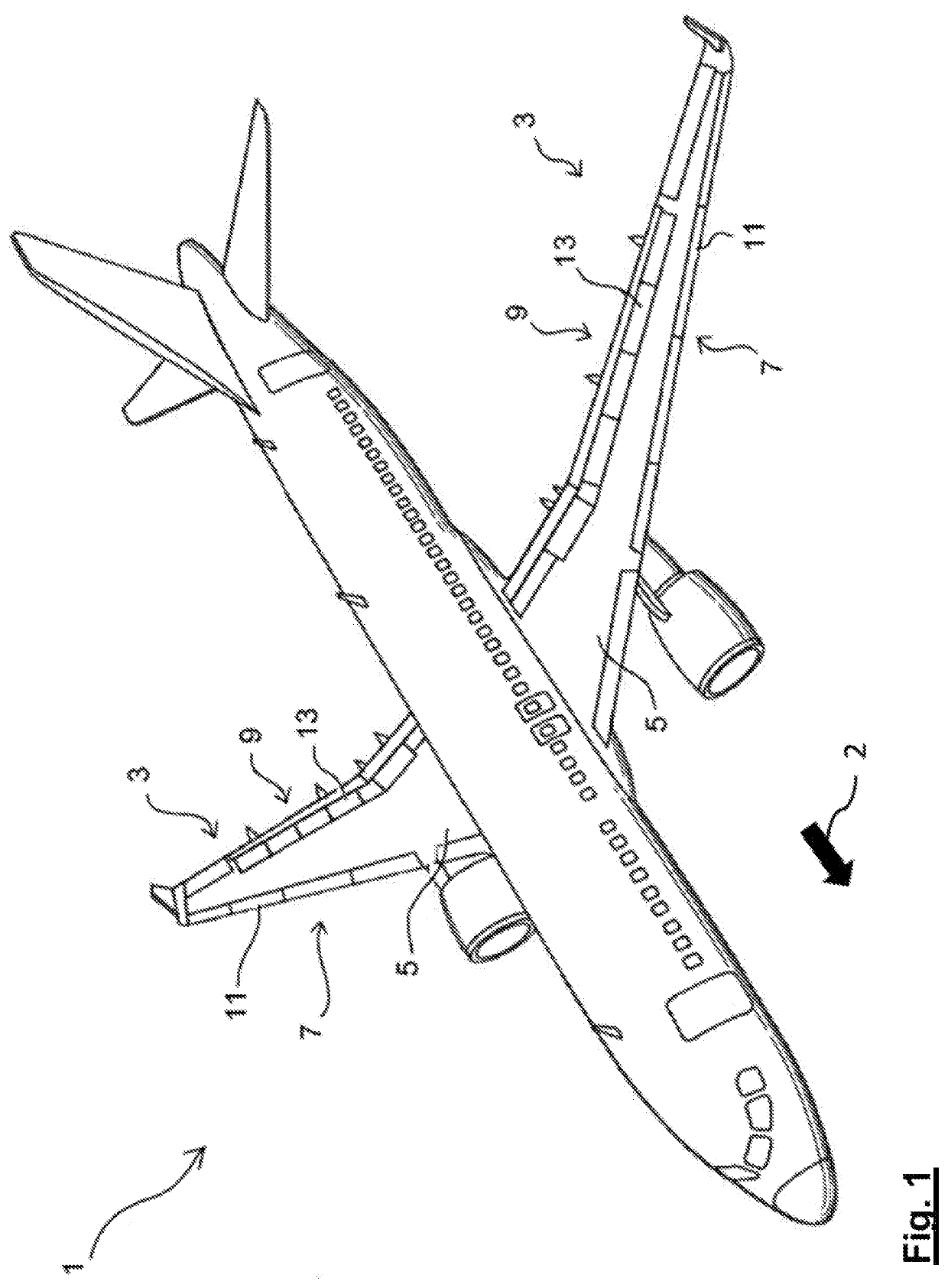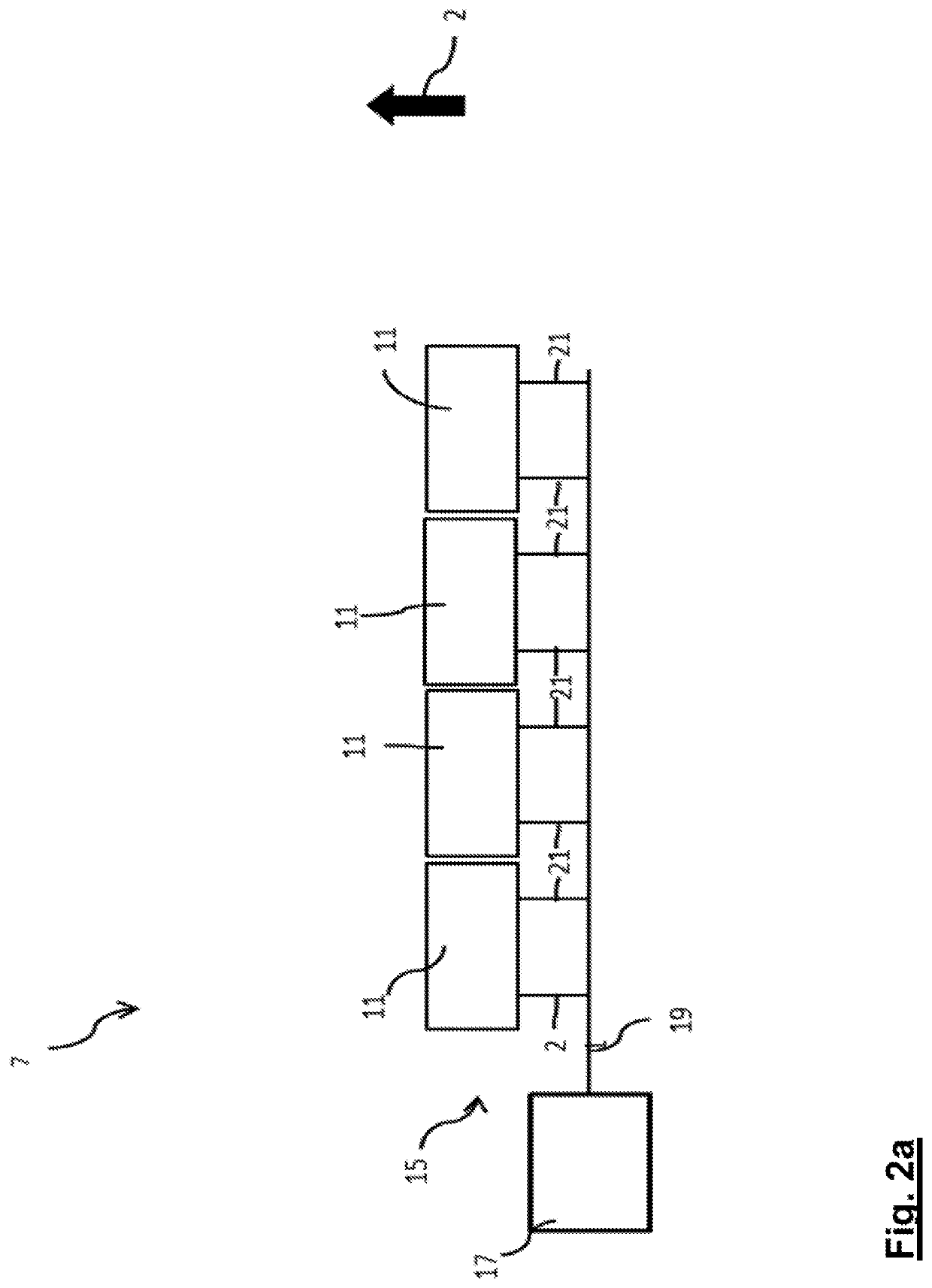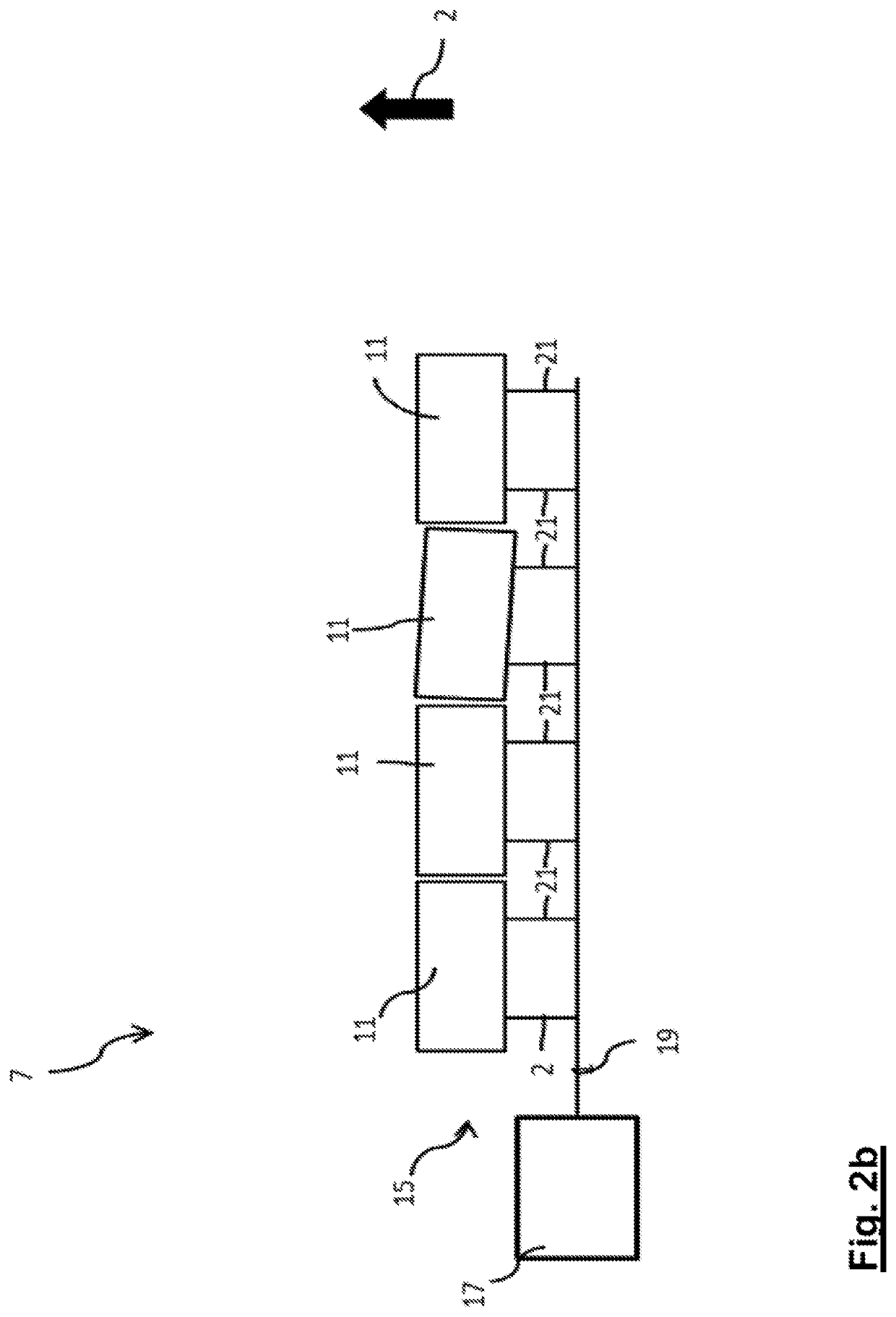Flight Control Surface Assembly
a control surface and assembly technology, applied in the direction of movable aircraft element position indicators, power amplification, aircraft power plants, etc., can solve the problems of relatively high complexity and/or weight, and relatively low efficiency, and achieve the effect of simple and cost-efficient arrangemen
- Summary
- Abstract
- Description
- Claims
- Application Information
AI Technical Summary
Benefits of technology
Problems solved by technology
Method used
Image
Examples
Embodiment Construction
[0033]In FIG. 1 an aircraft 1 comprising two wings 3 is shown. Each of the wings 3 comprises a main wing 5 and two flight control surface assemblies, namely a leading edge flight control surface assembly in the form of a slat assembly 7, and a trailing edge flight control surface assembly in the form of a flap assembly 9. Each of the slat assemblies 7 comprises four slats 11, which are arranged side by side in a row, and each of the flap assemblies 9 comprises four flaps 13, which are likewise arranged side by side in a row. In FIG. 1 the slats 11 and flaps 13 are shown in a retracted or stowed position in which the leading edges of the slats 11 are essentially aligned with the leading edges of the main wings 5 and the trailing edges of the flaps 13 are essentially aligned with the trailing edges of the main wings 5. The arrow 2 indicates the flight direction, i.e. when moving the slats 11 into the extended position they are moved with respect to the main wing 5 in the flight direct...
PUM
 Login to View More
Login to View More Abstract
Description
Claims
Application Information
 Login to View More
Login to View More - R&D
- Intellectual Property
- Life Sciences
- Materials
- Tech Scout
- Unparalleled Data Quality
- Higher Quality Content
- 60% Fewer Hallucinations
Browse by: Latest US Patents, China's latest patents, Technical Efficacy Thesaurus, Application Domain, Technology Topic, Popular Technical Reports.
© 2025 PatSnap. All rights reserved.Legal|Privacy policy|Modern Slavery Act Transparency Statement|Sitemap|About US| Contact US: help@patsnap.com



